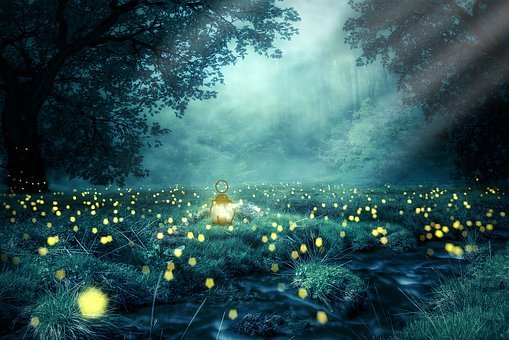This mandala appears before all sentient beings during bardo; at the time of death, an experience similar to the condition around the Big Bang in the universe occurs—our eye, ear, nose, tongue, body, mental consciousness, as well alaya consciousness all disappear or temporarily stop operating. The alaya consciousness is the carrier of all impure phenomena; when it disappears, a luminous state emerges. In tantra, this is called the ground luminosity or mother luminosity, the fundamental and original face of all phenomena. In Dzogchen, it is also called the clear light of death, because it cannot appear under normal circumstances, only at the time of death.
~Depicted from GATEWAY TO VAJRAYANA PATH - Vajrayana Terminology











